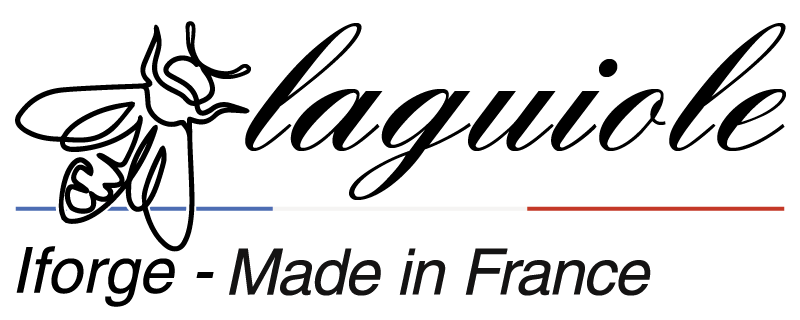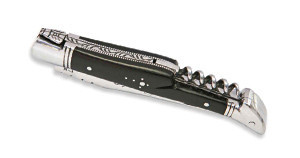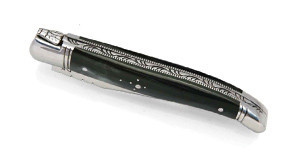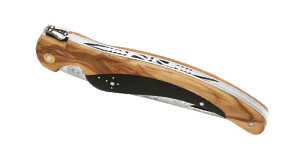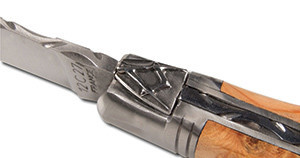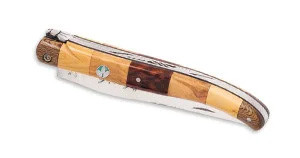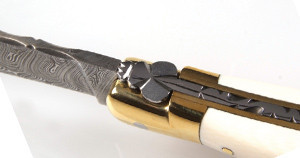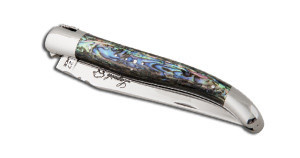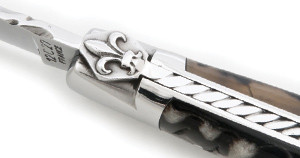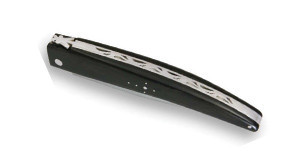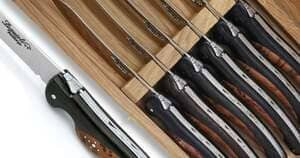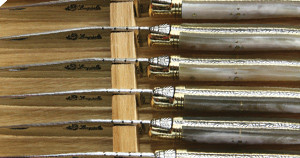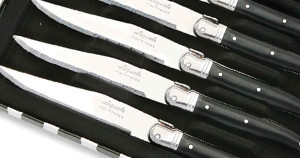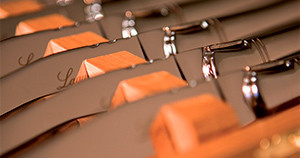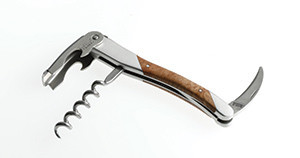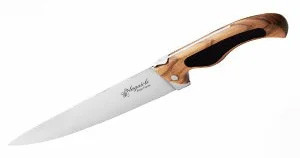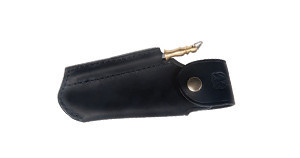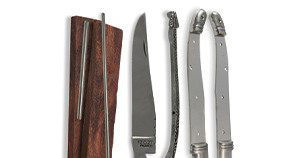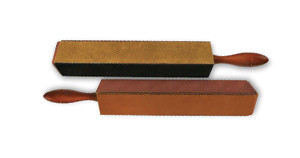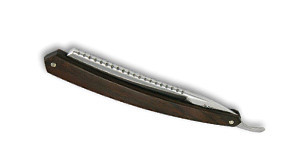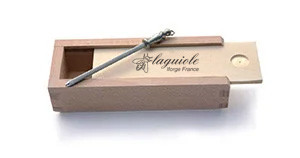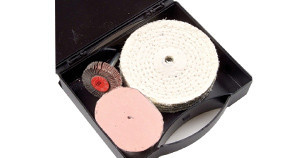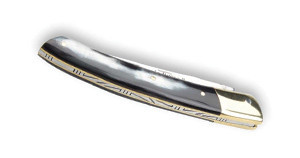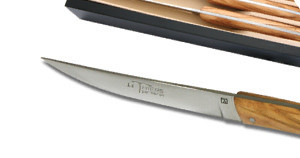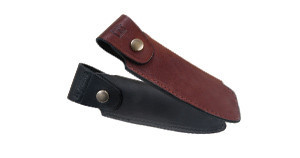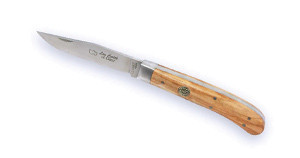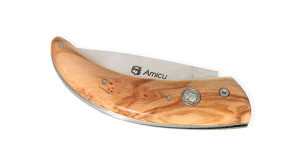Cabbage cutter hunter
The Club collects information from all amateurs of knife-makingIf you want to speak about something important for you, don't hesitate contact us.
.png)
Ivory
Six animals produce ivory: elephant, hippopotamus, narwhal and walrus warthog, sperm whale.
The mother of pearl got its name from the Persian "nakar", it's the inner lining of certain mollusk shells iridescent.
Unlike the other layers of the shell, the nacre is synthesized by the mollusk throughout its life.
The mother of pearl is one of the gemstones "semiprecious".
Pieces of nacre are softened in boiled water and then cut along and shaped.
Vegetable ivory
This is the tagua, substance derived from the seeds of a shrub of the palm family named tagun in Peru.
Artificial ivory
The value of the ivory and the difficulty in obtaining large pieces generates imitations.
Wood
Different wood species are used for the handles: bocote, box, acacia, olive, juniper wood... Ebony is the most commonly used species, no doubt due to its matt black appearance, which contrasts strongly with the shiny blade of the knife.
Shell of turtle
The shell of turtle is nearly the same composition as the horn ruminants, but it is more transparent and harder.
It can be polished off in all directions. Each turtle provides one or two kilograms.
The work of the scale is highly regulated.
Bone
The tibia bone of the horse is composed of very fine grains and is ideal as whalebone for making handles of razors .
Horn
Only the horns of buffalo, ox and ram are used for the manufacture of handles of razors.
Plastic
In 1870 John and his brother Welser blend of cellulose nitrate and camphor and then get the celluloid .It is produced by grinded tissue paper mixed with nitric acid and sulfuric acid, then added in camphor, alcohol and pigments.
Aluminium
This metal is particularly highly-prized due to its excellent resistance to oxidation. This means therefore that it can be used to make handles or shafts that are resistant to the acidity that transfers from the hands. It is one of the most commonly available metals on the planet, so there is no fear of scarcity!
Stainless Steel
It would be more accurate to say rustproof steel. Stainless steel is, in fact, an alloy of steel comprising carbon and chrome. It is the chrome component that prevents rust formation. This is especially useful for the handles of kitchen knives. Another merit is the fact that stainless steel is fully recyclable.
Copper
This metal was first discovered on the island of Cyprus. The first copper mines led to the flourishing of the Minoan civilisation. The metal requires no special processing for use. Brass is obtained if zinc is added, however. Brass is a vital component in knife handles, since it is the material used to make most of our bolsters (the top end of a knife handle).
We present a standard range of straight razor but consult us if you need more atypical handles.

